How to transplant cannabis plants
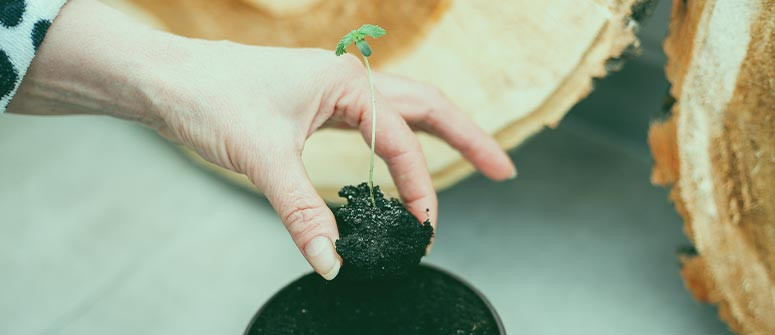
Mastering the art of transplanting cannabis is a must for any serious weed grower. Though an essential skill, it's generally fairly simple. In this article, we explore when, how, and why to transplant—and even offer you a step-by-step guide to make the process simple and successful.
Contents:
In the vast majority of grows, you’ll need to move your cannabis plant from a small pot to a bigger pot—at least once. This process is known as transplanting, and it's one aspect of cannabis cultivation that almost all growers will have to master.
In this article, we explore transplantation, as well as when and why to do it, before providing step-by-step instructions on how to transplant cannabis successfully.
What does transplanting cannabis mean?
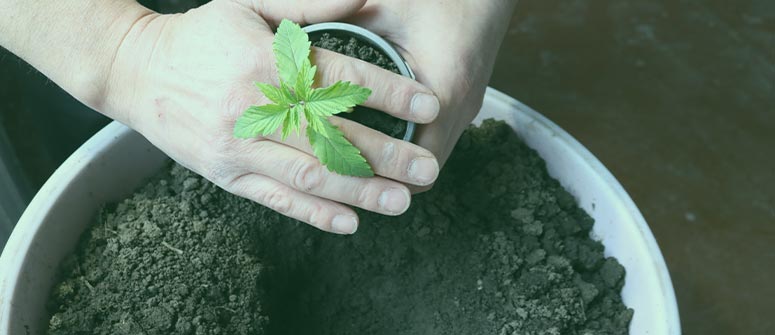
Transplanting cannabis means replanting it in a new vessel—moving it from one pot to another. Many plants require transplanting, especially when it comes to moving seedlings to bigger homes where they can mature. However, transplanting can happen at other times, too. For example, many growers move their weed plants from an indoor space to an outdoor space to finish growing (more on this later).
When transplanting, it’s worth considering the type of pot you will transplant into, if you transplant into a pot at all. Cannabis plants have specific requirements that are often better met by fabric pots, which help with aeration and drainage.
Why should you transplant cannabis?
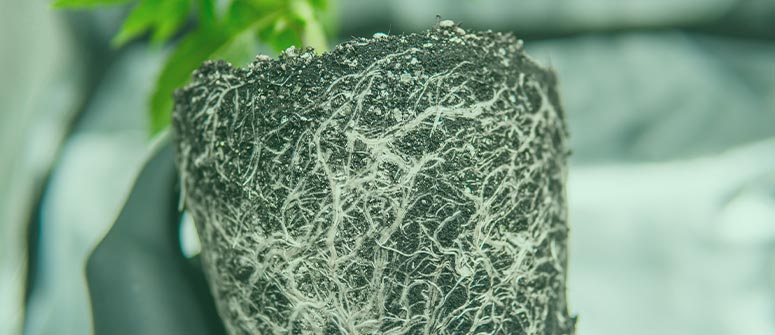
There are several reasons to transplant cannabis, but the primary reason is to ensure a healthy root system. In the first place, cannabis seeds are germinated in smaller pots so their young roots are protected and looked after. A smaller space allows for greater control of their environment, and mitigates the risk of drowning them. On top of that, germinating in small pots means that the tiny plants take up much less space per m², and therefore require less light than they would if they were germinated in their final pots.
However, once these plants start to grow, their root systems’ demand for space and nutrients increases. For a plant to grow large above ground, it needs to have plenty of space to stretch out its roots below. Without this space, the roots will form a hard ball and become "root-bound", the plant will struggle to grow, and the pots may even fall over as the plants become top-heavy.
Another reason to transplant might be to acclimate your specimens to an outdoor environment. Many growers start their seeds off indoors, then move their young plants outdoors for the remainder of the grow, once the weather is suitable. Furthermore, in cases of overwatering or issues with the substrate, someone might transplant in hopes of preventing their plant from falling ill.
When can you transplant cannabis?
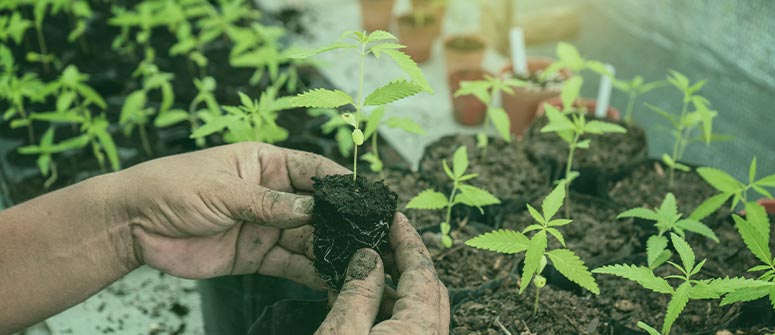
Though some growers may transplant at various points, there is one time when almost all marijuana growers have to repot: as plants move from the seedling stage into the vegetative stage.
The seedling stage begins as soon as the first green shoot pushes above the ground, and lasts for around 2–3 weeks. This is different for autoflowering seeds, but more on this later. You’ll want to transplant your young specimens around the end of the seedling stage—once they have around 4 sets of true leaves.
Timing needn’t be perfect; there’s a good window during which this change can occur. The key is to make sure that it’s not so early that you risk damaging the roots of a young seedling by transplanting it into a pot that’s far too big, and that it’s not so late that you have a rock-hard root ball you need to disentangle when you transplant it. Generally, if a plant’s beginning to look too big for its pot, then it’s probably safe to transplant it.
Some growers will incrementally increase the size of their plants’ pots, rather than moving them directly from their germination pot to their final pot.
Other factors that indicate when to transplant are:
- Speed of growth: if a plant is growing very quickly, then you can transplant it before it gets too big for its pot. Some plants shoot up visibly overnight. If this is the case, it might be time for a bigger pot.
- Root development: if you see roots (or just a taproot) emerging from the bottom of the pot, then it’s definitely time for a bigger pot.
- Problems with watering: soil holds water, and your plants drink that water. If your soil dries out too quickly, then that means there is too little soil and too many roots, and your plants need more space.
When can you transplant cannabis outside?
Plants that will finish growing outdoors often begin their lives indoors. At some point, they’ll need to be transplanted to their outdoor pots, or maybe even directly into a garden bed. Usually, this happens at the beginning of spring, after the last frost. Seedlings and young plants are particularly susceptible to cold snaps, and can be killed off by them.
Plants that begin life indoors will be used to the warm, near-perfect conditions that you give them. Moving outside after this can be quite a shock for them. As such, it’s important to “harden them off” before permanently relocating them outside.
In order to harden plants, you have to gradually acclimate them to their new environment. So initially bring them outside for a maximum of 1–2 hours, and increase their time outdoors over the course of 2–3 weeks until they have acclimated to the sunlight (particularly the UVA and UVB rays). As long as it's still really cold at night, you should bring them back in the evening.
After a few weeks, plants should be acclimated and able to survive outside. Anatomically, hardening off causes plants to become thicker and stronger, and have waxier leaves. These developments make them more resistant to humidity, cold, and wind.
Can you transplant cannabis during flowering?
On the whole, you shouldn’t transplant cannabis plants during the flowering stage. This is because most of their energy is, at this point, devoted to growing big buds. So if you damage their roots, which often happens at least a little during transplantation, you may end up with a smaller harvest as a result.
Once a plant has begun flowering, it cannot recover from damage in the same way that it can while vegetating, and this can have a negative impact on the size of the final yield. Given that, it’s not advisable to transplant a flowering marijuana plant unless you have to for some reason (such as overwatering).
What’s the best time to transplant cannabis: day or night?
Supposedly, it’s best to transplant at times when plants are not in direct sunlight. Therefore, cloudy days or evenings are recommended. As you can’t force a cloudy day, your best bet is to wait until the evening and transplant then. This means that plants have a whole night to settle in before they get back to photosynthesising in the morning.
Can you transplant autoflowering cannabis?
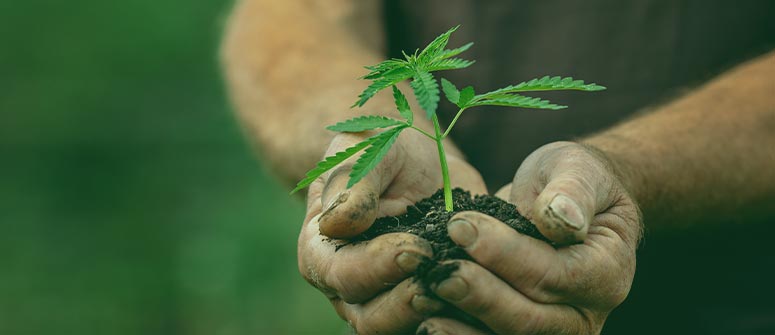
Transplanting autoflowering cannabis is a bit tricky, and is usually best avoided. The reason is that autos will begin to flower after around 3–4 weeks from germination, giving them little time to repair any damage that happens during their veg phase. So if you damage an auto while transplanting it, this could lead to permanently stunted growth and poor harvests.
As such, consider planting autos in their final pots. If you do choose to transplant autoflowering weed, then do it early and be very, very careful.
How to transplant cannabis plants
Now that you know about transplantation, it’s time to find out how to execute the process properly.
Transplanting is not a particularly difficult process, but it is one that’s worth performing thoughtfully, as it can have big consequences. Get it right, and you’ll have happy plants that bloom fat, healthy buds. Get it wrong, and you might permanently damage your plants and reduce your final yield.
How much space does a cannabis plant need?
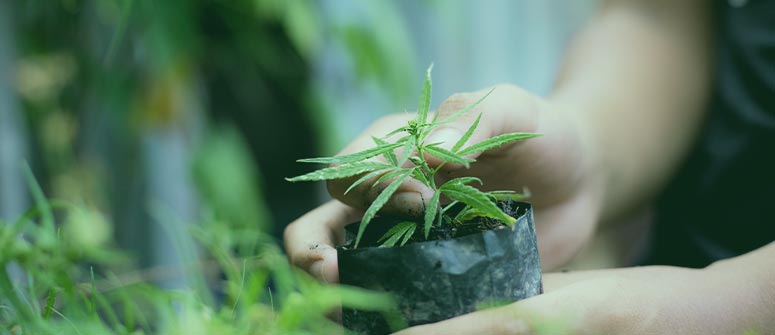
This can vary depending on the genetics of your plants. Sativas tend to like a lot of space to stretch, whereas some indicas can stay pretty compact.
The minimum size of a final pot should be no less than 10 litres. This is a good size for compact indoor grows and autoflowering plants. If you’re growing outdoors, pots can be much larger than this. Some growers opt for pots upwards of 25 litres or more—but this is only for true monsters!
Don’t overdo it, though. A bigger pot needs more space, and, if it’s unnecessarily big, increases the risk of problems such as root rot.
Transplanting cannabis: step by step
Below, you’ll find step-by-step instructions outlining exactly how to transplant cannabis.
Equipment
- High-quality soil
- Trowel (optional)
- Water
- Gloves (optional)
- New pot
Directions
- Water two days before transplanting. Moist (but not wet) soil helps the roots to separate.
- Wash your hands or wear gloves. You don’t want to transfer any pathogens from your hands to the roots/soil.
- Fill a new pot with soil. Don’t fill it right to the top, and leave it airy and loose. Compact soil traps water and air in ways that are detrimental to roots.
- Dig a hole in the middle of the soil in which the root ball of your cannabis plant will sit.
- Massage the sides of the old pot with the plant to loosen the soil.
- Flip the pot upside down with your hand over the soil and the stem of the plant between two fingers. Gently work the plant's stem until it comes out with the roots.
- If the root ball is very dense, loosen it a little. But if you can avoid touching it, that is better.
- Immediately place the plant in the hole.
- Cover with soil, and press down ever so lightly. The soil on top of the plant shouldn’t be too compact, but a little pressure can help it to settle.
- Water generously. This helps everything to settle into place.
Can you transplant cannabis deeper?
If you’re transplanting because a plant has stretched too much, you might want to bury it a little deeper in the soil to give the stem more support. Alternatively, your weed plants may just be too big for your grow space, and burying them deeper can help to shorten them.
In fact, even if a plant hasn’t stretched, repotting a seedling a little deeper can be a good idea anyway. The extra support helps these young, fairly weak stems grow tough and robust, preventing them from falling over and snapping.
Stretching, spindly plants can be avoided in the first place by using an appropriate lighting setup and choosing cultivars with genetics that typically grow smaller anyway.
Transplanting leads to bigger, better cannabis plants
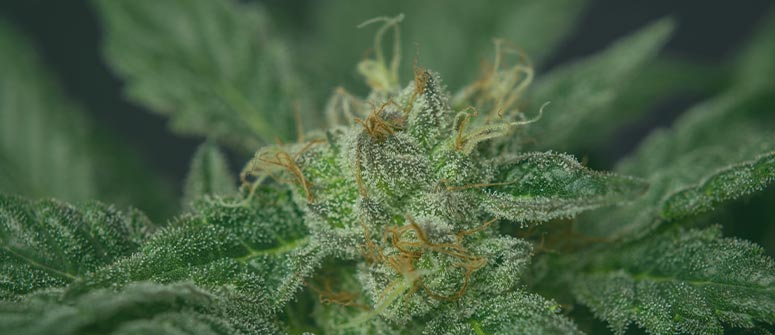
Unless you’re working with autos, transplanting is pretty much essential when growing cannabis. Getting it right will lead to huge, healthy plants that are capable of producing very large yields.
If you get it wrong, it’s (usually) no disaster either. Unless you really botch it and mangle your plants’ root systems, they can probably recover. With photoperiod plants, if you know that you’ve done a little damage while transplanting, extend the veg time by a week or two to give them time to recover. By doing this, you can still achieve a monster crop! With autos, it’s best to avoid transplanting at all—it will make your life a lot easier too!
Learning and loving transplanting is one of the key skills of any good weed grower. Now, get out there and master it!
.jpg)


.jpg)
